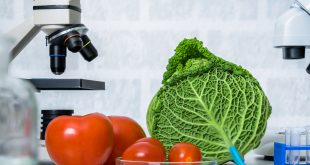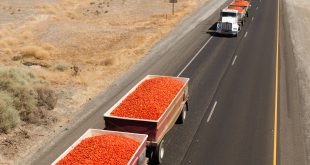Genetically modified foods are always a hot topic. Competing factors like a growing world population and a warming climate may necessitate help like this from science to create a sustainable food supply. At the same time, consumers are becoming more informed about where their food comes from and what goes into producing it and they have become increasingly wary of many GM foods.
Until now, no GM food animal had been approved for consumption in Canada. The AquAdvantage Salmon is the first. It received final approval from Health Canada May 19, 2016. It was approved by the FDA last November.
A press release from Health Canada says it and the Canadian Food Inspection Agency have completed thorough and rigorous scientific reviews of AquAdvantage Salmon for food and livestock feed use and determined that it is as safe and nutritious for humans and livestock as conventional salmon.
The AquAdvantage Salmon was developed by AquaBounty Technologies Inc. (AquaBounty Technologies’ largest shareholder is Intrexon Corporation, a synthetic biology company with interests in medicine, food and agriculture, fuels and the environment.) to promote rapid growth during early life. This was achieved by introducing a growth hormone gene from the Chinook salmon to an Atlantic salmon.
GM foods that have been approved by Health Canada have been consumed in Canada for many years. Changes to the genes of plants and animals can improve food quality and production – for instance by reducing the need for pesticides, making crops resistant to drought, preventing bruising, or allowing foods to be grown more quickly – but it’s been such a hot button issue for consumers despite the advantages that I’m surprised companies are still willing to swim against the current of consumer disdain and jump through the hoops of regulatory bodies. Obviously the payoff of making it to the end, of having a product approved, can be lucrative. AquaBounty says it is focused on improving productivity in commercial aquaculture, a $157 billion industry and the fastest-growing segment of the worldwide food industry.
“We look forward to bringing our nutritious salmon to consumers to enjoy in an environmentally responsible manner without damaging and exploiting the oceans, with the assurance it is as safe and healthy as the Atlantic salmon they are eating now,” Ronald L. Stotish, PhD, Chief Executive Officer of AquaBounty, said in a release.
The salmon will not be labelled as GM, something many consumer groups are fighting for. Health Canada requires labelling for food products, including genetically modified foods, where clear, scientifically established health risks or significant changes to the nutritional qualities of the food have been identified and can be mitigated through labelling, such as with an allergen, for example. In this case, given that no health and safety concerns were identified, there are no special labelling requirements.
The AquAdvantage Salmon won’t be available right away. Dave Conley, Director of Corporate Communications, says it will be more than a year and in limited quantity. The company’s Panama facility can only produce about 100 tonnes whereas the global salmon farming industry produced 2.5 million tonnes in 2014.
Clearly there are advantages to breeding an animal like this, for both consumers and business. There may be disadvantages too, but they haven’t yet been identified. We’ll see what consumers say.
Theresa Rogers
editor for
canadian food insights
 Canadian Food Business
Canadian Food Business




